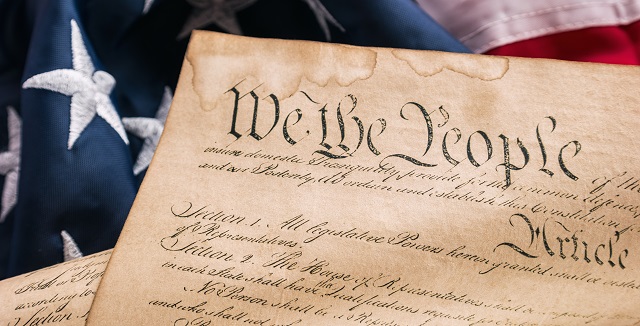On June 21, 1778, New Hampshire voted to ratify the United States Constitution, the ninth state of the original thirteen colonies to do so and the last needed to complete the ratification process.
Prior to that, the colonies operated under the Articles of Confederation. The Articles provided a loose governmental structure that recognized and maintained the independence of the thirteen colonies but proved weak and particularly insufficient in a time of war. Recruitment and support for the Continental Army especially suffered, forcing commanding General George Washington to repeatedly plead for troops, food, and supplies, pleas often ignored.
A Convention was held to address the shortcomings of the Articles, but in the minds of the majority, not to abolish or replace them. A revision was the expectation. Some delegates, however, viewed the Articles as fatally flawed and the need for a strong federal government as essential, most notably James Madison and Alexander Hamilton. Washington was elected President of the Convention. Ultimately the Articles of Confederation were abandoned by the Convention and replaced with a proposed Constitution of the United States of America.
Five states initially voted to ratify the Constitution, but by close votes in many instances, Delaware the first, followed by Pennsylvania, New Jersey, Georgia, and Connecticut. And adoption was hotly contested elsewhere, including by some of the leading patriots of the day. Patrick Henry of Virginia and Sam Adams of Massachusetts railed against what they perceived as an overarching federal government likely to impinge on the freedoms and rights of the citizenry. “Federalist” and “anti-Federalist” camps grew, and positions hardened. Notably, Article VII of the proposed Constitution provided that ratification only required the assent of nine states, a provision opposed by Benjamin Franklin, who believed unanimity from all thirteen was necessary.
“Federalist” and “anti-federalist” camps ultimately resolved their differences through the Massachusetts Compromise, an agreement whereby anti-federalists supported ratification in exchange for federalists’ support for amendments that would later become known as the Bill of Rights. Soon thereafter, Massachusetts ratified, followed by Maryland and South Carolina.
Ten days after Massachusetts ratification New Hampshire convened their Constitutional Convention, on February 13, 1788, spearheaded by friends of George Washington, John Langdon, and former Continental Army General John Sullivan. Some, including former General Henry Knox, were convinced new Hampshire would simply follow the lead of Massachusetts, but Langdon and Sullivan knew resistance would be significant, owing to western New Hampshire concern over a potentially oppressive federal government and a lack of enthusiasm for enhanced shipping commerce that the new Constitution was expected to bring. Langdon and Sullivan proved correct. After nine days, the New Hampshire Convention adjourned without ratification.
But from February to June, Langdon and Sullivan negotiated with opposition delegates, including convincing four who opposed ratification to stay home from the reconvened Convention, and finally, on June 21, 1788, with a series of amendments to the Constitution proposed, New Hampshire ratified by a vote of 57 yays and 47 nays, making the Constitution of the United States the law of the land.





